“Unlocking the Creative Block: How a Renowned Guide Rekindled My Passion for Writing”
Have you ever felt like your creative spirit got locked away – like it lost the key during one of those long midnight battles of self-doubt? I can relate! I’ve stood at that crossroads, grappling with a cynic in my head whispering, “What’s the point?” So when a friend reached out, feeling completely lost in her artistic journey, I couldn’t help but share the same heavy-hearted frustration. In search of a remedy, I stumbled upon Julia Cameron’s enchanting guide, The Artist's Way, a self-help book masquerading as a creative recovery toolkit. What if the secret to breaking free from our art-block chains lies not in forcing creativity but rather in nurturing it? Let’s take a deeper dive into how this transformative journey helped me—and could help you—crack open the nut of creativity! LEARN MORE.

A cynic in creative recovery gets cracked open like a nut.
A few months ago, I got a phone call from an actor friend in distress. She was completely disillusioned with her life and her work, and heartbreakingly admitted that she couldn’t even enjoy art anymore without feeling self-critical. Any advice I could think of giving felt hypocritical because it was all painfully familiar.
The last 10 years have felt like a prolonged funeral service for my teenage dreams of becoming a writer. Playing witness to it’s slow death made me a scared and bitter person, so hurt by a lack of progress that I refused to continue trying. The act of sitting down to write felt akin to taking a thousand, terrifying leaps of faith.
Funnily enough, I’m no stranger to leaps of faith. But this felt different, and I couldn’t figure out why. Tried and tested methods of perseverance did not make a mark on that immovable block. I was tired of fighting (and losing) this battle by myself, and god, I tired of hearing myself complain about it.
Spurred on by wanting to help my friend, I reached out for the first time and asked for help. And as luck would have it help arrived — in the form of The Artist’s Way.
The Artist’s Way
The Artist’s Way (TAW) by Julia Cameron is a book, but it’s not meant to be read like one. It is also a 12-week, self-guided course. The proposal is simple: creativity is the natural way of living. If we do not experience it, it is because there is an active suppressive force blocking it. Instead of devoting your energy and frustration to being “more creative” or productive, that effort should be spent on examining that block and gradually dismantling its power.
It offers to do so with a strong proposition: dedicate 1-2 hours a day for the next 12 weeks to your artistic recovery. Every week has required reading and exercises to explore different themes of recovery. The activities range from introspective examining of your mental pitfalls, to redecorating your room and throwing old clothes away. On top of the weekly activities, you also commit to two important and time-consuming activities:
- Daily Artist’s Pages. Three full pages of writing about everything or nothing at all. The content does not matter as much as the process of producing the pages. The idea is that three pages pushes you past the point of comfort and forces to light things in the back of our heads that might come up during the day and distract us.
- Weekly Artist’s Date. 1 hour every week carved out your schedule regardless of other obligations. Do something that feels creatively nourishing in solitude, consciously make time to search for inspiration.
The structure offered by the book struck my interest. Honestly, most adults secretly crave the relief of being told what to do so that they can stop pretending they know what’s going on (cue Fleabag’s iconic “Just tell me what to do” scene). I made a commitment to myself: I would do the course in it’s entirety and with complete earnesty. No excuses, no backing out, no half-arsing.
I am writing this from the other side of the 12 weeks with two full notebooks to show for it. In that time, I started writing again. I joined an art residency programme. My network of creative peers growing. But most importantly, I am doing. After so many years of feeling stunted, the privilege of being able to do is something I’ll never take for granted.
I’m not interested in promoting a creative “get rich quick” schemes. The book came into my life because I was looking for it. I was ready to do the work. It played a really fundamental part in helping me jet off at the starting line. If you are in a similar position – frustrated, motivated, and eager to get over a mental block, it might do the same for you.
Careful Healing
TAW greets you like you are checking yourself into rehab (in some ways as a creative in recovery, you are doing just that). It treats the healing process gently. Force someone with scars from rejections and long-held traumas to start making art? They’re going to get triggered into fight or flight mode and retreat deeper into their cave. Instead, the book coaxes you through the process by removing the thorn from the wound, patiently dismantling the most painful things that are causing the blocks in the first place.
The first chapter focused on that dismantling and it impacted me deeply. The task was to identify and write in length about three “monsters” that stopped you from creativity. I identified parental figures who told me that “only people who can’t study do art”; friends that I had turned into competitors stuck around in my head even into adulthood; and most heinous antagonist of them all — myself.
It seems pretty therapy 101, but I felt exposed. I had to admit that these outdated ideas I had absorbed as a child were still lurking around in my adulthood. Whenever I got scared that these creative desires might lead me to uncertain paths (i.e. ones that didn’t directly promise professional and financial success), I leaned on them like a crutch. Looking under the bed showed that the monsters were really just figments of my imagination.
Focus on the Quantity, not the quality
A toxic idea I held on to was that if I was going to produce something sub-par, I rather not do it at all. “Quality over quantity” I would say to myself, blind to the fact that I ended up doing neither.
TAW preaches quantity, not quality. It tells you to create indiscriminately. I fought with this idea for a while before realising that the art that makes it out to public consumption is 1% of actual work done. Poets and painters go through multiple drafts of the same material before it is ready. This is why the book wants you write three full pages a day, to remove the egotistical need for everything to be completely polished. It instills a healthy degree of humility in a person to continuously create things that are a little crap. It takes the drama out of it all. Denying yourself the process of trying is committing premature slaughter on an idea. Expecting too much from our ideas too early is ejecting a feotus from the womb too early. Doing the work shows you what other work needs to be done.
Even now, I can tell when I’m using perfectionism as a means of procrastination. When I have a long essay to write, I find myself lingering on the title and the opening paragraph, fine-tuning it until it’s just right but neglecting the meat of the argument. Or going down a rabbit hole or research and realising I’ve used my entire allocated hour of writing with one sentence to show for it. The only thing that has worked is writing unimpeded from a stream of consciousness, expending everything that needs to be said and then leaving the task of editing later. This separates out my two roles as a writer and an editor, so that they do not get in each other’s way.
The “God” problem
I have two wolves inside me. One is a cynic who uses scientific method to reject abstract mystical ideas. The other is a sentimental poet who laps up any romantic introspection of the human condition (which often works really well through the lens of mumbo-jumbo).
These two wolves were confused by this book. There is an undeniably religious and spiritual leaning in the text. Many of the teachings (which often read as sermons) are delivered through the lens of “God”, hammering concepts of prayer and deliverance throughout the activities in the book. She does give space for creative license, saying that “God” can take any shape or form the reader desires, even just a “good orderly direction or flow”. The book promised that there was some “force” that wanted me to create. By listening to it, magical coincidences would happen and transformation would come on the back of it.
I was close to abandoning the whole project after the first mystical pages of the book. It was hard to imagine how guidance so detached from reality was supposed to help me achieve my desires in the real world. More so, I didn’t like the idea of being owed success, like there was some self-replenishing pie in the sky that had my name on it. To access it, the only thing I had to is ✨believe✨ — what a con job.
However, I made a commitment to myself to do this in earnest, and mama didn’t raise no quitter. So, I listened to what this American lady had to say about God without rolling my eyes. I recorded myself reading prayers aloud and listened back to them. I wrote little slogans that said “You take care of the quality, I’ll take care of the quantity” (capital Y and everything) and stuck them around my working desk. I wrote and thought about God in my pages.
The annoying thing is that it actually worked.
By opening up my mind to temporarily accept the “God” the book was pushing, I had to let go of judgemental thoughts that would usually succeed in halting any progress: “this idea isn’t as good as I thought”, “this has been said before”, “I’m not ready to write this yet”. Instead, I shut my thoughts off and said “I’m trust that this will lead me where I need to go.”
That act of faith delegated crippling anxiety to some celestial being allowed me to do the work instead of worrying about whether doing the work was the right thing. Wonderfully, a lot of ideas and playfulness came to fill the space the anxiety left behind. During this time, I wrote my first article in 10 years. I almost fell into old patters of losing interest in the idea, but forced myself to trust in the process. It led me to an outcome completely different from what I first intended, but a better one.
When I got to the end of the book, I realised I did not need the God concept anymore. Learning how to work through the anxiety instead of against it was the proof that I’ve always been able to write — I just wasn’t giving myself the chance to do it. All this trust that I had temporarily directed to “God” has now been redirected back onto myself, a ready and willing recipient. To use religious terminology, I’d reshaped my relationship with faith. My new faith did not make me lazy; it give me hope to try. You need to be believe you are capable of creating something, in order to start doing it. One phrase in the book on the topic of faith has stuck with me:
Pray to catch the bus, then run as fast as you can.
Reality Check
If you do not have the luxury of quitting your job and dedicating hours to this course, I know people who worked at a pace of one chapter every two weeks, some in groups. However, discipline is an important part of the process. These three months were an exercise in prioritising creative work, and even with no professional commitments, it made me re-arrange my life to create pockets of focus. The accountability made me a lot more intentional. I would set my alarm half an hour earlier to sit at my desk with a cup of tea writing my pages. My Monday nights before going to bed were spent reading the weekly chapter and starting on the exercises. Going home and brain-rotting to TV or my phone was replaced with an excursion on my bike to a gallery or library for my weekly Artist’s Date.
When I came out of a relationship that lasted through my twenties, my understanding of how to love was reshaped. Romance was always sold to me as something powerful and fateful that you hopelessly “fell” into. Now, being in love to me is embodying love in my actions and decisions rather than the emotionally destabilising experience of extreme attachment. (Thanks, Bell Hooks!)
After reading The Artist’s Way, my understanding of creativity has converged with my understanding of love — it is a verb rather than a state of being. Being an artist is less about talent, or even vision. It’s about the daily act of showing up and doing. This pragmatism takes the grandiosity and drama out of the tortured creative trope and leaves you with…well, the work. And it is an honour to do the work.
I’d admitted a lot of scary things to myself by the end of the final week 12. I want to write and be known as a writer. I started describing myself as one when I met people.
The book asks you to track “synchronicities”: happy coincidences that will occur to you as you unblock your creativity. These synchronicities are. attributed to being in tune with the cosmic flow of creative energy (eurgh) but I think reality is much simpler.
If you are brave enough to say “I am a writer”, you give someone the chance to say “oh, me too.” You need to declare yourself to some degree for people, your people to find you. If you hide, you deny yourself community. You deny yourself agency. You deny yourself potential.
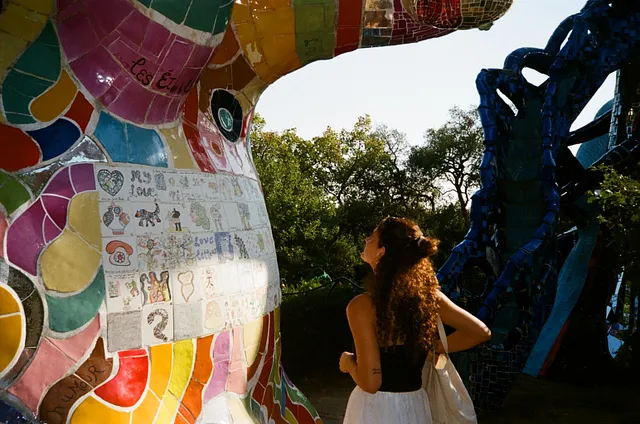

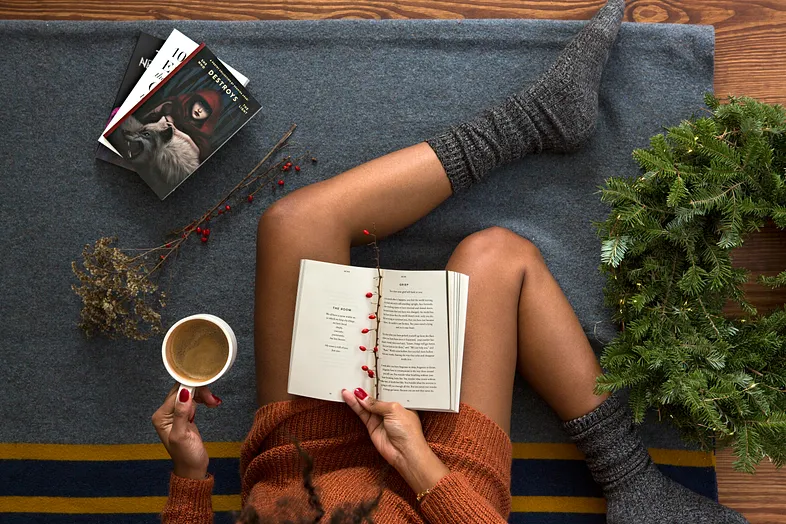



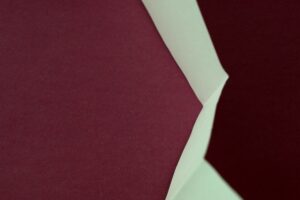
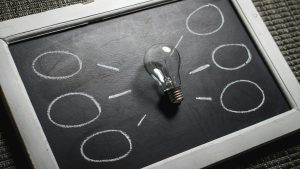
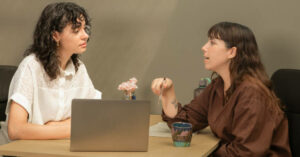
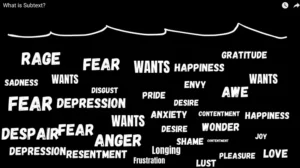

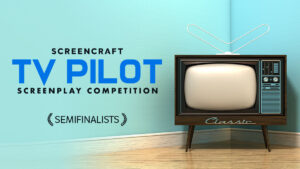
Post Comment